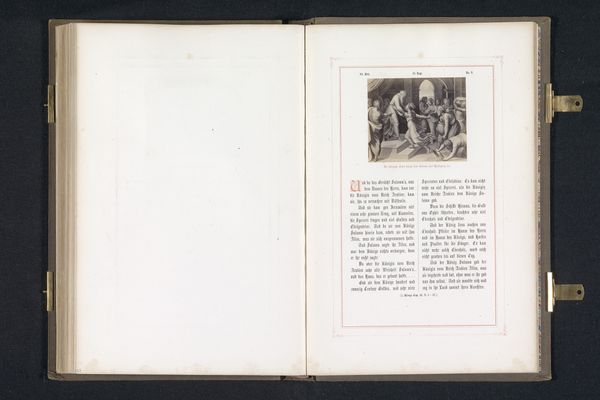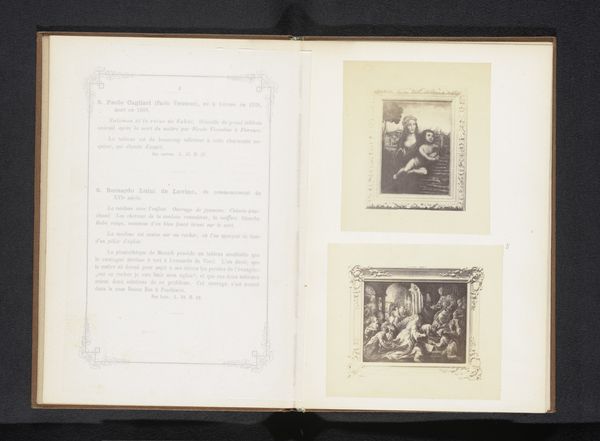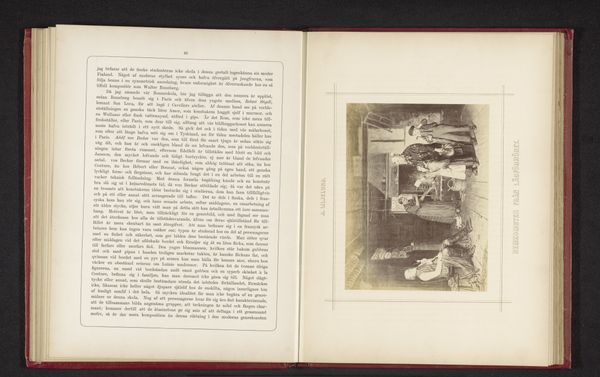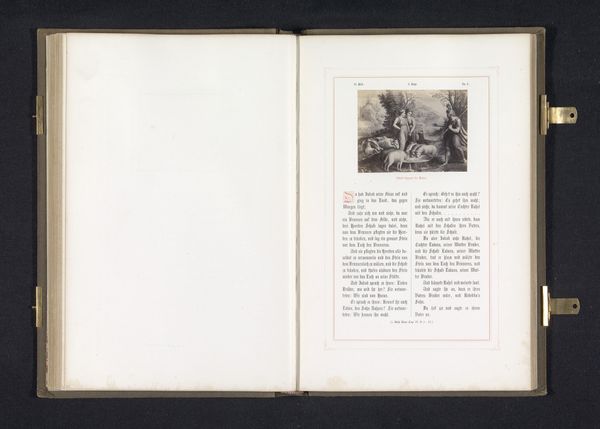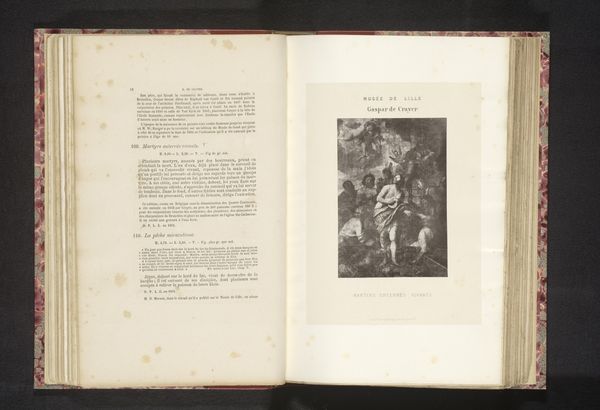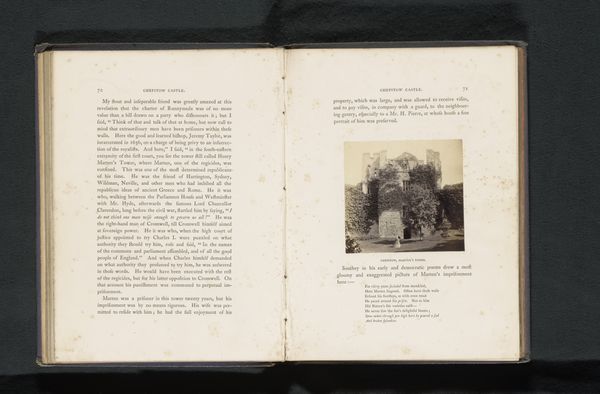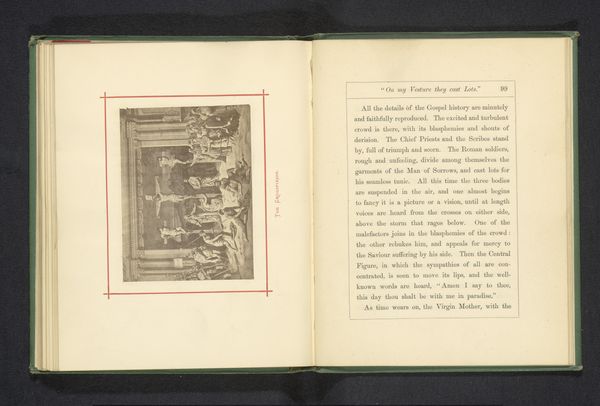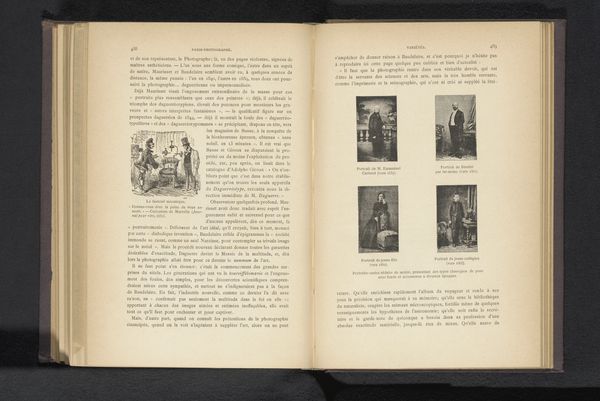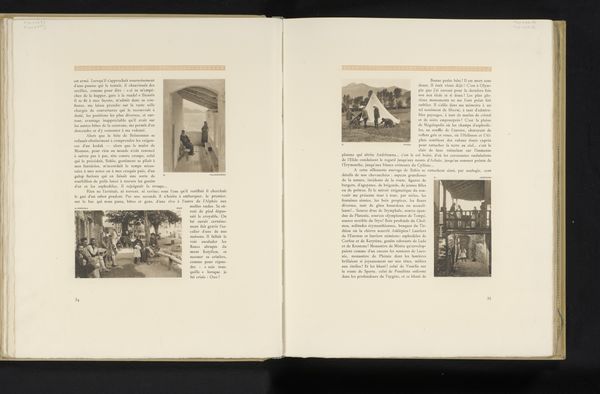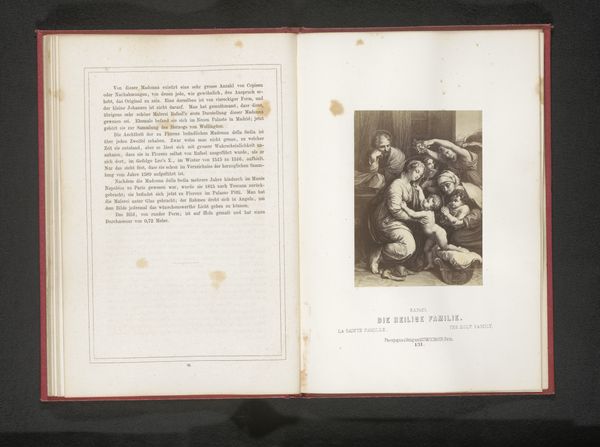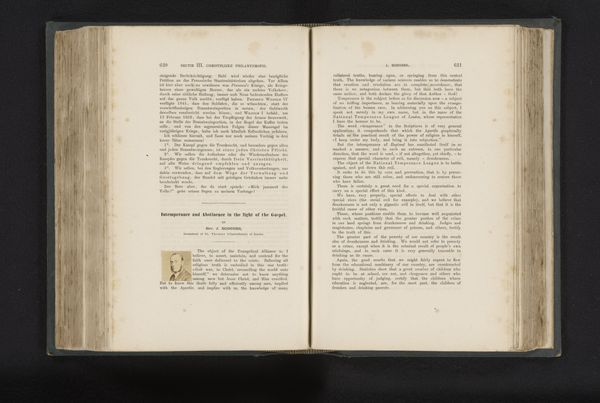
Fotoreproductie van een prent naar een fresco van God die Eva aan Adam voorstelt door Rafaël voor de loggia's in het Vaticaan before 1861
0:00
0:00
print, fresco, photography, engraving
#
allegory
# print
#
fresco
#
photography
#
history-painting
#
italian-renaissance
#
engraving
Dimensions: height 68 mm, width 77 mm
Copyright: Rijks Museum: Open Domain
Curator: I’m immediately drawn to the texture in this image. What are your initial impressions? Editor: A solemn beginning. The muted tones, like faded memory, frame a rather loaded encounter: God presenting Eve to Adam. Curator: Precisely. What we’re looking at is a photogravure—a photographic reproduction—of a print of a fresco. The original fresco, dating back to the Italian Renaissance, depicts God presenting Eve to Adam. It’s believed to be by Raphael and was part of the Vatican loggias. This reproduction, though, predates 1861 and is by Gustav Schauer. What I find particularly intriguing is the chain of reproduction here—from fresco to print to photograph. Editor: Indeed, that reproductive history is quite telling. To me, it highlights the layered mediations inherent in how we've come to understand these origin stories. The fresco, already ideologically charged, goes through a process of further encoding with each translation. It makes me consider who had access to these images and the sociopolitical power they conveyed across different historical moments. How did access change going from fresco to print to photographic reproduction, and what shifts in meaning might have occurred with each adaptation? Curator: I think that’s spot on. The shift from fresco to print, and then to photography, mirrors changes in art production and accessibility. Frescoes were site-specific, made with locally available pigments on walls and ceilings. Prints and photographs, on the other hand, facilitated wider distribution and consumption. The labor involved in creating a fresco demanded a specific set of skills and organization of workers compared to mass produced printmaking, shifting from unique, handcrafted works to readily available objects of visual consumption. Editor: And the aesthetic shifts surely impact its meaning. The loss of color going from fresco to the black and white print lends it a particular austerity. Then adding photography introduces yet another layer of interpretation. We are no longer in the High Renaissance, but in a moment increasingly defined by its reproductions. This affects how we grapple with gender and religious narratives of the creation story presented in the original. The print and photogravure function in entirely different social, economic, and political landscapes. Curator: Yes, understanding these landscapes provides context for assessing changing interpretations of classical artworks through evolving reproductive technologies. Editor: Absolutely, analyzing this piece forces us to confront how historical context shapes the reproduction of myth.
Comments
No comments
Be the first to comment and join the conversation on the ultimate creative platform.

